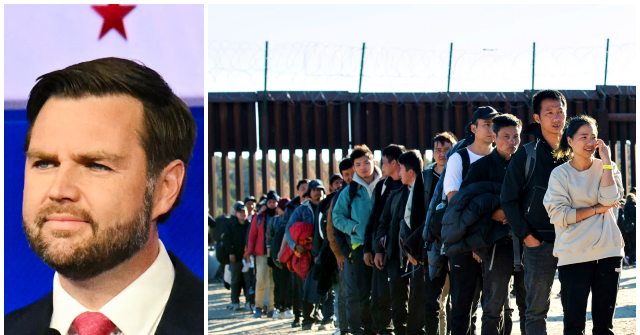Recent discussions surrounding immigration and its impact on housing prices have reignited debates about economic policies and their social implications, particularly in light of remarks made by Senator JD Vance (R-OH). Vance articulated a perspective that immigration contributes to rising housing costs for Americans, suggesting that the influx of illegal immigrants under the leadership of Vice President Kamala Harris has exacerbated this issue. He pointed to the potential market dynamics in which twenty-five million illegal aliens compete with American citizens for limited housing resources, asserting that this competition is a fundamental reason for the sharp increases in home prices observed across the United States. Vance clearly delineated his view that while immigration may elevate housing prices, the responsibility lies not with the immigrants themselves but with policy decisions that have allowed for such significant population changes.
This viewpoint has received unexpected acknowledgment from the libertarian Cato Institute, known for its advocacy of open immigration policies. In a column by Alex Nowrasteh, the Cato Institute recognized Vance’s assertion, asserting that high levels of immigration do indeed influence housing prices due to the fundamental economic principles of supply and demand. Notably, the article emphasized that as more immigrants seek housing, this heightened demand drives up prices, essentially aligning with basic economic theory about the housing market dynamics. Nowrasteh’s stance marks a critical engagement with the broader implications of immigration on local economies and housing, an acknowledgment that transcends traditional libertarian open-border rhetoric.
To provide a more concrete example, the situation in Springfield, Ohio, illustrates the local impacts of increased immigration on housing markets. In this region, the influx of Haitian migrants has corresponded with a dramatic rise in home prices. Between August 2019 and August 2024, the median price of a single-family home in Springfield saw a staggering increase of 101 percent, significantly outpacing the national average increase of 46 percent during that same timeframe. This surge has had tangible repercussions for different demographic groups within the community, particularly affecting renters and first-time home buyers who are struggling to keep pace with the rising costs that often accompany heightened demand generated by an increasing population.
Moreover, analyses by experts in the field further substantiate the relationship between immigration and housing costs. Steven Camarota from the Center for Immigration Studies presented findings indicating a direct correlation between increases in the immigrant population within metro areas and corresponding rent increases experienced by U.S.-born households. His research uncovered that a 5-percentage point increase in the immigrant share of a city’s population is linked to a 12-percent increase in average rent for U.S.-born households. Such data underscores the tangible economic challenges that many American families face, as intensified competition for rental housing and affordable homes pushes prices higher than many can manage, thereby stretching family budgets thin.
The argument posited by Vance and reinforced by analysts like Camarota suggests that these economic pressures are not merely incidental but rather a profound consequence of policy interpretations and implementations regarding immigration. Adding millions of individuals to the country naturally creates increased demand for housing, which in turn drives up rental costs. The data reported by the Census Bureau indicates that the recent spike in rent prices observed in 2023 represents the most substantial increase in over a decade, highlighting acute market pressure points resulting from demographic shifts.
In conclusion, the discourse surrounding immigration’s influence on housing prices presents a complex interplay of economic fundamentals and social policy. While Cato Institute’s acknowledgment of Vance’s remarks showcases a willingness to explore the nuances of immigration policy and its economic impact, it also raises deeper questions about how communities can balance the benefits of diversity and new residents with the pressing need for affordable housing. As the conversation evolves, it becomes increasingly vital for policymakers to consider how integration and housing strategies can manage the ramifications of immigration more effectively, ensuring that both newcomers and native citizens can thrive in growing, accessible communities.

